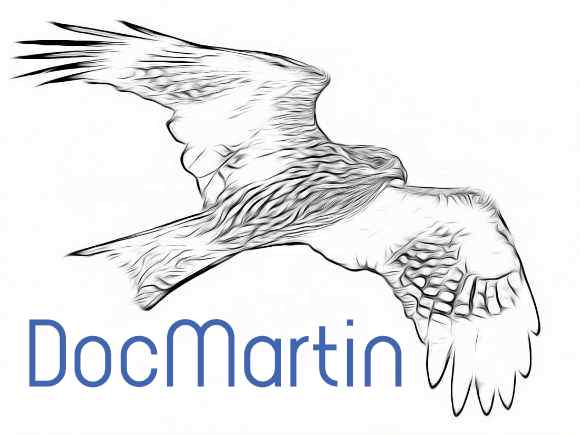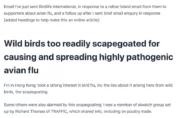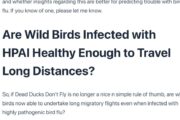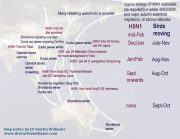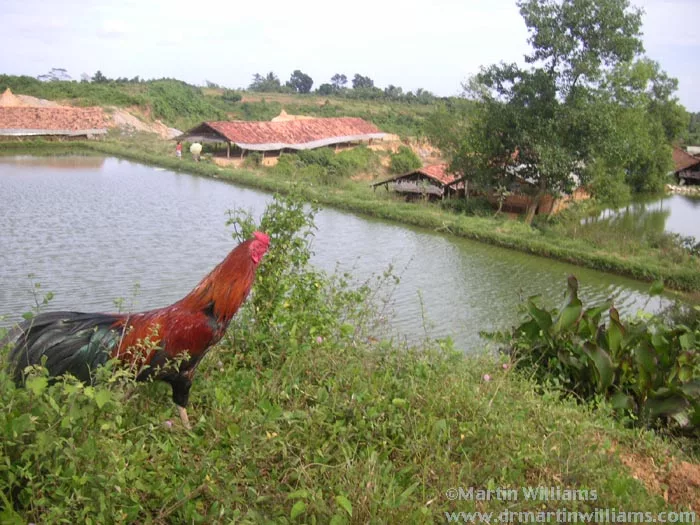Here, some info on evolution of highly pathogenic bird flu variants – maybe better dubbed poultry flu; they evolve from regular, low pathogenic, bird flus; these are common but tend to be mild in wild birds otherwise they can’t spread and be sustained [basically: Dead Ducks Don’t Fly; no use if severely sicken or kill many of the host species]. It seems poultry farming, especially intensively, goes hand-in-hand with the emergence of these dangerous variants, perhaps formerly known as “fowl plague”.
Of note:
// From 1959 onwards, we identified a total of 39 independent H7 and H5 LPAI to HPAI conversion events. All but two of these events were reported in commercial poultry production systems, and a majority of these events took place in high-income countries. In contrast, a total of 127 reassortments have been reported from 1983 to 2015, which predominantly took place in countries with poultry production systems transitioning from backyard to intensive production systems. Those systems are characterized by several co-circulating viruses, multiple host species, regular contact points in live bird markets, limited biosecurity within value chains, and frequent vaccination campaigns that impose selection pressures for emergence of novel reassortants.//
Geographical and Historical Patterns in the Emergences of Novel Highly Pathogenic Avian Influenza (HPAI) H5 and H7 Viruses in Poultry
See also LA Times article by Wendy Orent:
//it wasn’t until poultry production became modernized, and birds were raised in much larger numbers and concentrations, that a virulent bird flu evolved. When birds are packed close together, any brakes on virulence are off. Birds struck with a fatal illness can still easily pass the disease to others, through direct contact or through fecal matter, and lethal strains can evolve. Somehow, the virus that arose in Scotland found its way to China, where, as H5N1, it has been raging for more than a decade.//
The price of cheap chicken is bird flu
Highly pathogenic bird flu variants sustained by vaccines?
As per the term “high pathogenicity”, these variants are lethal to substantial numbers of birds – both wild, and poultry. Indeed, a definition is:
HPNAI viruses have an IVPI [intravenous pathogenicity index] in 6-week-old chickens greater than 1.2 or, as an alternative, cause at least 75% mortality in 4-to 8-week-old chickens infected intravenously.
History of highly pathogenic avian influenza
Hence, outbreaks of these high pathogenicity bird flus can cause major mortality; the above-quoted paper mentions, “The outbreak in Pennsylvania and surrounding states resulted in the loss of over 17 million birds.” And control measures used to involve slaughtering infected poultry, and even those linked to them; partly to protect poultry, also as there are fears high path bird flu could become a human transmissible pandemic: notably, Hong Kong slaughtered around 1.2 million chickens after a bird flu outbreak in 1997.
HOWEVER:
The government of China decided during 2005 to use a comprehensive strategy to control this zoonosis involving mass vaccination of poultry and strict culling of infected flocks
Subclinical Highly Pathogenic Avian Influenza Virus Infection among Vaccinated Chickens, China
This vaccination strategy was implemented – rather than slaughtering infected flocks – even though there were warnings it could lead to “silent infections”, with poultry infected by highly pathogenic bird flus, but not becoming very sick or dying. And, silent infections indeed occurred; as this paper reported:
this study showed that vaccinated chicken flocks can be infected with vaccine-escape variants without signs of illness. Thus HPAI mass vaccination may increase shedding of the virus by infected chickens that otherwise would likely exhibit signs of illness and die soon after infection; therefore, HPAI mass vaccination may increase spread of a virus that otherwise would be easily identified by observation of clinical signs.
Various pros and cons of poultry vaccination are covered in an article, Rational use of vaccination for prevention and control of H5 highly pathogenic avian influenza. Despite the cons, the huge downsides of highly pathogenicity bird flus infecting flocks – leading to massive deaths, financial losses – has evidently led to vaccination spreading. Check with google, say, and you can readily find poultry vaccines available for sale, even though supposedly can’t be used in countries such as the UK. Maybe not all are legit:
Nine people have been arrested for selling fake bird flu vaccines that are suspected to have contributed to an outbreak of the disease in northeastern China’s Liaoning province.
Nine arrested over fake bird flu vaccine
See also a May 2022 article re Europe considering use of vaccines:
For now, many countries refuse such shipments because they aren’t confident countries with vaccinated birds have controlled the virus. Flu experts worry vaccination may not completely halt outbreaks, perhaps raising the long-term risk that the avian virus leaps to humans. And developing and administering vaccines will be costly.
Wrestling with bird flu, Europe considers once-taboo vaccines
Integrated Fish Farming also sustaining bird flu?
Another potential way of sustaining highly pathogenic bird flu from poultry is through Integrated Fish Farming – particularly when feeding poultry manure or even dead chickens to fish in ponds. There were warnings this could lead to major issues with influenza:
The result may well be creation of a considerable potential human health hazard by bringing together the two reser- voirs of influenza A viruses, generating risks that have not hitherto been con- sidered in assessment of the health con- straints of integrated animal-fish farming
Fish farming and influenza pandemics
Even so, there seemed to be such benefits that the techniques were promoted, as in this workshop: INTEGRATED LIVESTOCK-FISH PRODUCTION SYSTEMS.
I was among a small band of people interested in wild birds and flu who came across the potential link between integrated fish farming and flu; it seemed highly plausible there could be a connection: if dead poultry and poultry manure were used as fish fertilizer, could mean bird flu viruses entering the fish ponds [not infecting the fish]. And bird flus are evolved to spread between birds, especially waterfowl; so survive in water for some time [30 days or so as I recall].
I’ve even seen this kind of fish farming, on Java: chicken manure and dead chickens were being fed to catfish; also some dead chickens on wooden platforms above the water, perhaps so maggots could feast with some falling into the pond as food. Here’s one of the shots I took there [not keen on eating catfish after this!]:
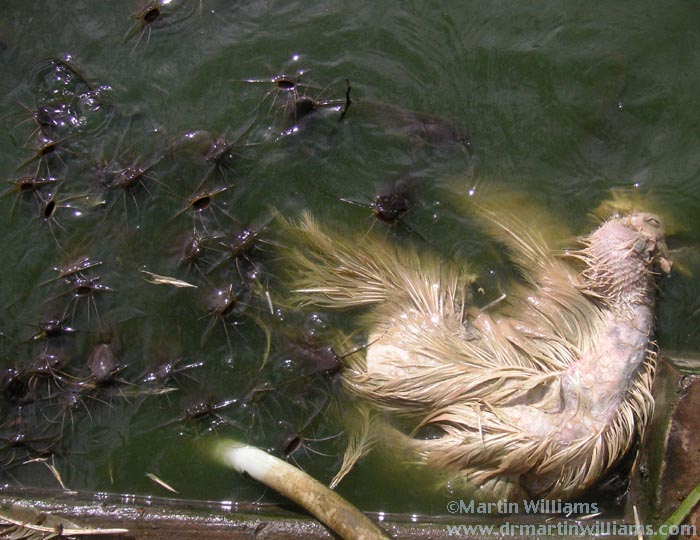
So, next time you see wild birds being blamed for bird flu outbreaks, maybe don’t just take at face value. Consider, too, where the money is – often a good rule of thumb in life, and works here too I believe.
For a lot more related info, see the forum here on Poultry Flu and Migratory Birds
Bird flu – highly pathogenic avian influenza articles
On highly pathogenic avian flu issue, Birdlife should be voice of wild birds not defer to poultry industry
Email I’ve just sent Birdlife International, in response to a rather bland email from them to supporters about avian flu, and…
Spread of Guangdong goose highly pathogenic avian influenza in poultry farms and wild birds
It seems that wild birds can be readily blamed for spread of highly pathogenic avian influenza, ,while investigations of the poultry…
Basic info on wild birds and H5N1 avian influenza
Dead Ducks Don’t Fly: Wild Birds not Major H5N1 Vectors Notions that migratory birds are responsible for spreading the New n…
Bird Flu inc H5N1 Info
Bird Flu – especially H5N1 Update, August 2022: This page originated at time when H5N1 was spreading, causing concern, especially in…
Indonesian Catfish Farm – of type linked to bird flu spread?
I have been involved in discussions regarding the possibility “integrated fish farming” may play a role in sustaining and even spreading…
See also forum on this site: H5N1 Poultry Flu and migratory birds
